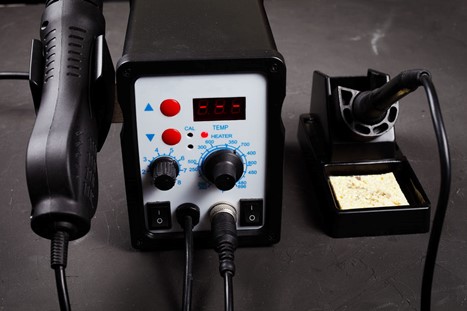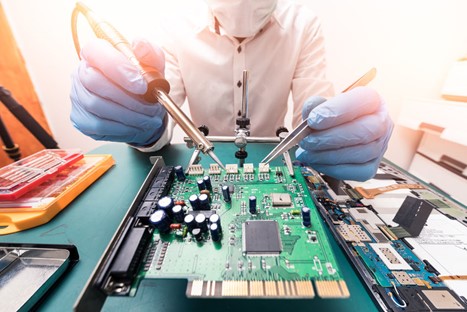What Is an SMD Rework Station and How Does it Work?

Electronic components are the essential pieces that make an electronic item function as it should. Most of the time, these components run smoothly, but when they don’t, fixing the problem requires specific tools. An SMD rework station is often the preferred tool for performing intricate reworks and repairs of these broken or off-kilter components. This guide gives you a brief overview of what the rework station is and what it can do.
Making Good Use of Hot Air
Electronic components have many working parts and most of them are made of metal. After the component is removed from its casing, there must be a way to remove and maneuver metal parts to work on specific areas. The only thing capable of melting metal to a point where it can be bent or moved is extreme heat. This is what rework stations are made to do. The station can generate the kind of hot air temperatures the operator needs, and it can do it quickly.
Rework stations are also de-soldering stations, and its soldering function allows operators to easily repair metal using metal solder. Hot air generated from the station is also useful for melting solder, making it liquid for short periods of time.
Common Hardware Features
All rework stations share similarities in how they function. Placement, style, and energy output of the various components may differ from one brand to another.
- Air flow grade. There is a dial located on the main hardware that allows the operator to adjust the rate of hot air flowing from the hand tool.
- Temperature control. This is one of the most important features of any rework station, allowing operators to adjust the temperature from the lowest to the highest range at any time.
- Hot air wand. This handheld tool is also known as a hot air gun. It is what the operator uses to apply heat to metal solder to soften or melt it enough to accomplish reworks and repairs.
- Wand holder. This is located on the side of the station’s hardware casing and it is a convenient place to keep the wand when it’s not in use.
- Power switch. The main power switch is usually in an easy-to-see location. Essential Accessories
Here are the accessories that make the rework station fully functional for the operator.
- Nozzle tips. Operators can choose what hot air tool soldering tips they want to use with their wand. Be sure to select tips that are compatible with the station’s brand model.
- Solder. There are so many uses for solder and lots of quality choices.
- Tip cleaner. Tips must be cleaned properly to keep them in good working shape, and a tip cleaner is needed for constant tip maintenance.
- Flux. This is a liquid solution used for cleaning oxides and impurities from metal surfaces.
- SMD tweezers. These help operators pick up small components without touching them.
- ESD table mat. Anti-static table mats help protect components from harmful static discharge.
- ESD wrist strap. This anti-static strap is worn by the operator to avoid static discharge.

Uses for the SMD Rework Station
When it comes to learning how to use an SMD rework station, there are many ways to put it to good use. Here are some of them to get you started:
- Cold joints. Connections are hard to see, and heat helps move some parts.
- Missing components. Hot air a replacement part where one is missing.
- Polarized components. Incorrectly placed parts need fixing.
- Removing bad parts. Get rid of bad parts from manufacturing and replace with new parts.

